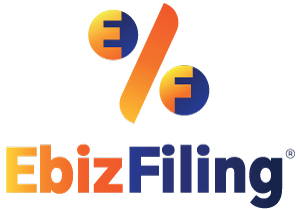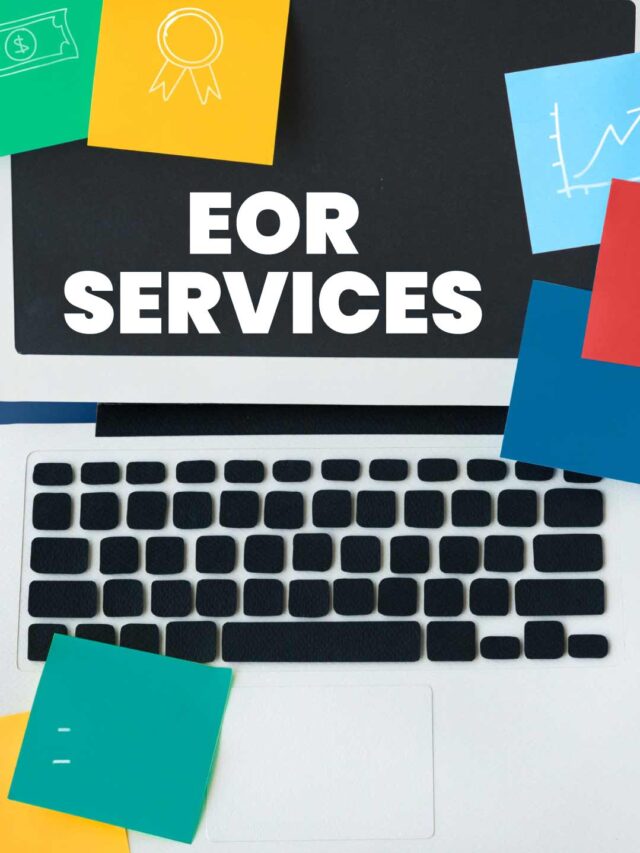
-
June 4, 2025
How To Calculate Valuation of a Pvt Ltd Company?
Introduction
Calculating the valuation of a pvt ltd company is essential for business owners to determine its worth for investments, mergers, or sales. Unlike publicly traded companies, private firms do not have a market price, so different valuation methods such as Net Asset Value (NAV), Discounted Cash Flow (DCF), and Market Multiples are used. These approaches consider key factors like financial performance, assets, liabilities, and future earnings potential. Choosing the right valuation method depends on the industry, business model, and market conditions.
What is a Valuation of a Pvt Ltd Company?
The valuation of a private limited company is the process of determining its financial worth. Since private companies are not listed on the stock exchange, their value is calculated using different methods like assets, earnings, and market trends. This helps in making informed decisions for investments, mergers, or business sales. A proper valuation gives a clear picture of the company’s financial health and future potential.
Methods to Calculate Valuation of a Pvt Ltd Company
1. Net Asset Value (NAV) Method
The Net Asset Value (NAV) Method is a straightforward approach to calculating the valuation of a private limited company. It determines the company’s worth based on the difference between its total assets and total liabilities. This method is particularly useful for businesses with substantial tangible assets, such as manufacturing firms, real estate companies, and asset-heavy industries.
Formula: NAV = Total Assets − Total Liabilities
How It Works:
- Total Assets: This includes all the company’s assets, such as cash, accounts receivable, inventory, machinery, property, and any other valuable resources.
- Total Liabilities: These are the company’s financial obligations, including loans, accounts payable, outstanding debts, and other liabilities.
- Calculation: By subtracting total liabilities from total assets, the NAV method provides a clear estimate of the company’s net worth.
When to Use the NAV Method?
- Best suited for businesses with high-value physical assets rather than intangible assets like brand value or goodwill.
- Ideal for companies in industries such as real estate, construction, or manufacturing where assets play a crucial role in business valuation.
- Useful when the company is being liquidated, as it helps determine the residual value after settling liabilities.
While the NAV method provides a simple and transparent valuation, it may not accurately reflect a company’s true market value, especially if it has strong future earnings potential or significant intangible assets.
2. Discounted Cash Flow (DCF) Method
The Discounted Cash Flow (DCF) Method is a widely used approach for valuing a pvt Ltd company based on its expected future cash flows. This method estimates the company’s present value by discounting its projected cash flows to the current date using a discount rate. It is particularly useful for startups and growing businesses with strong future revenue potential.
Formula: Company Value = ∑ (Future Cash Flows / (1 + r)t)
Where: r (Discount Rate) is the rate used to discount future cash flows, often based on the company’s cost of capital or required return on investment, and t (Time Period) is the number of years in the future for which cash flows are projected.
How It Works:
- Estimate Future Cash Flows: Project the company’s expected revenue and expenses to determine its future cash flows.
- Select a Discount Rate: The discount rate represents the risk and time value of money. A higher rate is used for riskier businesses.
- Discount Future Cash Flows: Since money today is worth more than the same amount in the future, each year’s projected cash flow is discounted to its present value using the formula.
- Sum of Present Values: The total present value of all future cash flows gives the company’s valuation.
When to Use the DCF Method?
- Best suited for startups, high-growth companies, and businesses with strong future earnings potential.
- Useful when the company has stable and predictable cash flow projections.
- Helps investors and business owners assess whether a company is overvalued or undervalued.
While the DCF method provides a comprehensive valuation based on future potential, it relies on accurate cash flow predictions and an appropriate discount rate. Small changes in assumptions can significantly impact the final valuation, making it essential to use realistic financial forecasts.
3. Market Valuation Method
The Market Valuation Method determines the value of a pvt ltd company by comparing it with similar businesses in the industry. This approach uses financial multiples, such as the Price-to-Earnings (P/E) Ratio, Enterprise Value to EBITDA (EV/EBITDA), and Price-to-Sales Ratio, to estimate the company’s worth based on prevailing market trends. It is commonly used in industries where comparable company data is readily available.
How It Works:
- Identify Comparable Companies: Find businesses in the same industry, size, and market conditions that have been recently valued or sold.
- Choose a Financial Multiple: Select an appropriate multiple based on key financial metrics, such as;
- PE Ratio (Price-to-Earnings): Used for companies with stable profits.
- EBITDA (Earnings before Interest, Taxes, Depreciation, and Amortization): Suitable for capital-intensive businesses.
- Price-to-sales Ratio: Used when earnings fluctuate, such as in early-stage startups.
- Apply the Multiple: Multiply the chosen industry multiple by the company’s corresponding financial figure to estimate its valuation.
Example Calculation: If a competitor in the same industry is valued at 10× EBITDA, and your company’s EBITDA is ₹10 crore, then:
Company Valuation = 10 × 10 = ₹100 crore
When to Use the Market Valuation Method?
- Best for companies operating in industries with ample market data and similar businesses for comparison.
- Useful for investors, buyers, and sellers looking for a quick and realistic valuation based on actual market trends.
- Frequently used in mergers and acquisitions to assess a company’s worth compared to its peers.
While the Market Valuation Method provides a real-world estimate, it may not always reflect a company’s unique strengths, intangible assets, or future growth potential. Additionally, market conditions and industry trends can significantly impact valuation multiples.
4. Earnings Multiples Method
The Earnings Multiples Method is a widely used approach to valuing a private limited company by applying an industry-standard multiple to its Profit After Tax (PAT). This method is particularly useful for well-established and profitable companies, as it directly links valuation to earnings performance.
Formula: Valuation = PAT × Earnings Multiple
Where: Profit After Tax (PAT) is the net earnings of the company after deducting taxes, and Earnings Multiple is a multiplier based on industry benchmarks, market trends, and company performance.
How It Works:
- Determine the Company’s PAT: Calculate the net profit after tax, which reflects the company’s profitability.
- Identify an Industry-Standard Multiple: This varies by sector and is influenced by factors like growth potential, risk level, and market demand.
- Apply the Multiple: Multiply the PAT by the industry multiple to estimate the company’s valuation.
When to Use the Earnings Multiples Method?
- Best suited for profitable and stable companies with consistent earnings.
- Commonly used in service-based businesses, manufacturing firms, and mature startups where profitability is a key factor.
- Helps investors and buyers quickly assess a company’s worth based on financial performance.
While the Earnings Multiples Method is simple and widely accepted, it does not consider future growth potential, asset value, or market fluctuations. Therefore, it is often used alongside other valuation methods for a more accurate assessment.
5. Book Value Method
The Book Value Method calculates a company’s valuation based on its balance sheet by considering shareholders’ equity after deducting intangible assets. It reflects the company’s net worth based on the value of its tangible assets and liabilities. This method is particularly useful for asset-heavy businesses such as manufacturing, infrastructure, and real estate companies.
Formula: Book Value = Total Equity − Intangible Assets
Where: Total Equity is the net worth of the company, which includes retained earnings and shareholder contributions, and Intangible Assets are non-physical assets like goodwill, brand value, patents, and intellectual property.
How It Works:
- Assess Total Equity: This includes the company’s retained earnings and the capital invested by shareholders.
- Deduct Intangible Assets: Since this method focuses on tangible net worth, intangible assets such as brand recognition or goodwill are excluded.
- Determine Book Value: The remaining amount represents the company’s net tangible worth.
When to Use the Book Value Method?
- Best for asset-heavy industries such as manufacturing, infrastructure, and real estate.
- Useful when a company has low market volatility and primarily holds tangible assets.
- Often used in liquidation scenarios to estimate how much shareholders would receive if the company’s assets were sold.
However, the Book Value Method does not account for future growth or profitability, making it less suitable for technology-driven or service-based businesses.
6. Revenue Multiple Method
The Revenue Multiple Method is a valuation approach that estimates a company’s worth based on a multiple of its annual revenue. This method is commonly used for high-growth businesses, such as technology startups, SaaS (Software as a Service) companies, and e-commerce firms, where revenue growth is a key indicator of success.
Formula: Valuation = Revenue × Multiple
Where: Revenue is the company’s total income from operations, and Multiple is a standard industry multiplier that varies based on market trends, growth potential, and risk factors.
How It Works:
- Determine the Company’s Annual Revenue: This includes all sales generated within a financial year.
- Identify the Industry Multiple: Typically derived from recent acquisitions, competitor valuations, or investor benchmarks.
- Apply the Multiple: Multiply the company’s revenue by the chosen multiple to get the valuation.
When to Use the Revenue Multiple Method?
- Best for high-growth companies such as tech startups, SaaS firms, and online businesses.
- Ideal when profitability is not yet stable, but revenue growth is strong.
- Frequently used in venture capital and startup funding rounds to estimate company value.
While this method is quick and straightforward, it does not account for profitability or operational efficiency, making it necessary to use alongside other valuation methods for a more accurate assessment.
Conclusion
Valuing a pvt ltd company is crucial for making informed business decisions related to investments, mergers, and acquisitions. Different methods like Net Asset Value (NAV), Discounted Cash Flow (DCF), Market Valuation, Earnings Multiples, Book Value, and Revenue Multiples help estimate a company’s worth based on assets, earnings, and market trends. Choosing the right valuation method depends on the industry, financial performance, and growth potential to ensure an accurate and fair assessment of the company’s value.
Suggested Read :
Tax Structures for Pvt ltd Company
How to Close a Pvt Ltd Company in India?
Monthly Compliance for Pvt Ltd Companies
Advantages & disadvantages of Pvt ltd Company
FAQs
1. Why is valuation important for a private limited company?
Valuation helps business owners understand their company’s worth for investments, mergers, acquisitions, or selling purposes. It also helps attract investors and make strategic financial decisions.
2. Which is the best method to calculate the valuation of a private limited company?
There is no single best method. The right approach depends on the company’s industry, assets, profitability, and future growth potential. Common methods include Net Asset Value (NAV), Discounted Cash Flow (DCF), Market Valuation, and Earnings Multiples.
3. How does the Discounted Cash Flow (DCF) method work?
The DCF method estimates the company’s value by calculating the present value of its future cash flows using a discount rate. It is ideal for startups and businesses with strong growth potential.
4. When should the Book Value Method be used?
The Book Value Method is best for asset-heavy businesses like manufacturing, real estate, and infrastructure companies, where tangible assets determine a company’s worth rather than future earnings
5. Can a company use multiple valuation methods?
Yes, businesses often use multiple valuation methods to get a more accurate estimate of their worth. Comparing different methods helps in making better financial and investment decisions.
Pvt Ltd Company Annual Filing
File annual compliance of company in simple steps with Ebizfiling
About Ebizfiling -










December 17, 2025 By Steffy A
Private Limited Annual Filing: Notes and Documents Checklist Important Notes for Private Limited Annual Filing The professional fees mentioned are exclusive of penalties and taxes, if any. DPT-3 (Return of Deposits) is not part of the standard package, as applicability […]
September 27, 2025 By Dhruvi
ROC Annual Compliance Calendar for Pvt Ltd Company FY 2024-25 Introduction Missing any ROC due date can lead to penalties, late fees, and the company losing its active status. Every Private Limited Company must adhere to the compliance calendar issued […]
November 4, 2025 By Dhruvi
Tax Audit for Private Limited Companies : Rules, ICAI Guidelines, and Extended Due Date Introduction A Tax Audit ensures that the financial statements of a Private Limited Company meet the requirements of the Income Tax Act. It becomes mandatory under […]